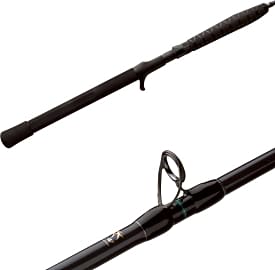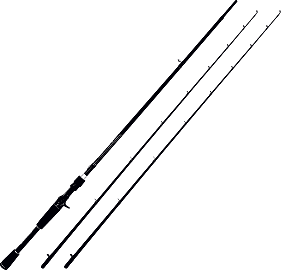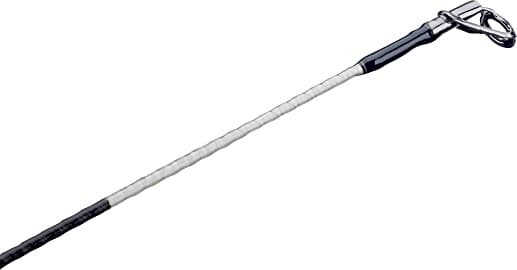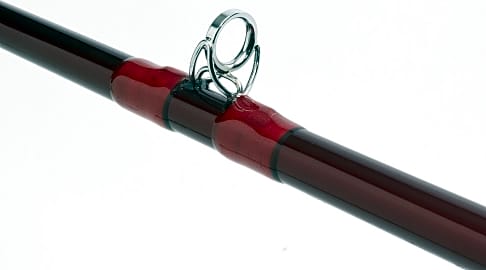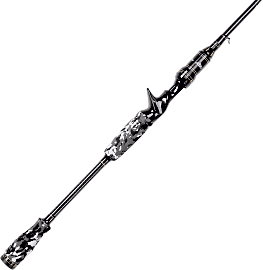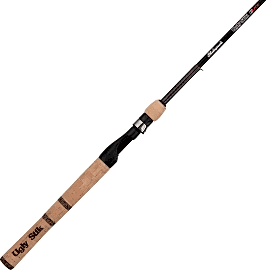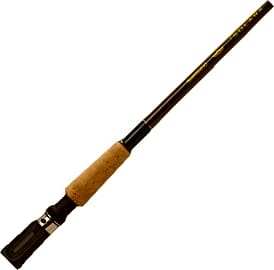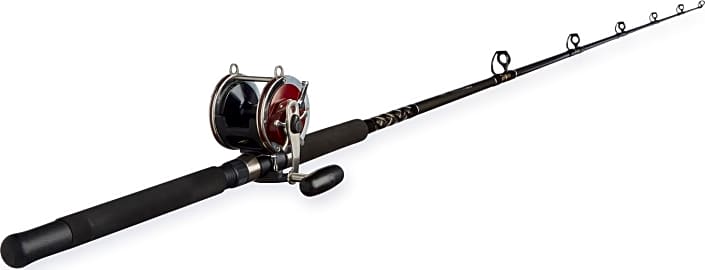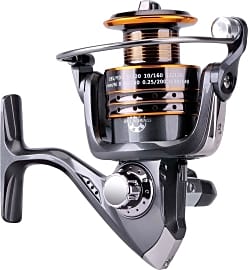The 10 Best Fishing Poles

This wiki has been updated 41 times since it was first published in March of 2015. You wouldn't arrive at a construction site without the right tools for the job, so why should you go fishing without a quality pole? The correct rod can make the difference between a fun, successful outing and a miserable day watching fish after fish escape into the murky depths. Any of these options will help instill confidence in casting, retrieving, and, ultimately, catching dinner. When users buy our independently chosen editorial picks, we may earn commissions to help fund the Wiki.
Editor's Notes
November 21, 2020:
It appears that the Shimano Solora no longer comes with a one-year limited warranty, so we adjusted the listing accordingly, noting its attractive copper color. The Penn Senator is a heavy-duty rod suitable for saltwater fishing, but we discovered that the eyelets are prone to breaking, a frustrating development for an otherwise reliable option. We also learned that the real seat on the Ugly Stik Elite is too small for certain reels, which we’ve indicated in the bullet points.
The list lacked a fly fishing rod, so we added the relatively high-end Fenwick Aetos. It’s a great value as far as fly fishing poles go, performing on par with much more expensive options currently on the market. The sensitivity and accuracy are quite impressive, and it sets hooks effectively.
The rest of the list contains a nice mix of light, medium, and medium-heavy rods, some of which offer fun action for targeting small panfish and bass, and other more rigid models that work well for fighting intense saltwater species. If you’re looking to create a custom rod, check out the new addition to the Special Honors section: Barrett Rods.
May 07, 2019:
Due to a lack of availability, we had to remove the FishingSir Starter and Entsport Baitcaster from the list. However, we found a similar Entsport model (the Entsport Legend) in stock and added that in its place. Unlike most options, it comes with two different styles of rod tips, which allows you to configure the pole for the species you’ll be targeting and the type of strategy you plan to employ. Users really seem to appreciate this customizable aspect.
The Sougayilang Spincasting and the Yongzhi Combo were eliminated for similar reasons: we found multiple reports of both poles breaking in the midst of light to moderate use — in some cases at the handle connection, and in other cases the shaft simply snapped.
Strength is the basis of the appeal of the KastKing Perigree II, especially with the baitcaster version, which users lauded for its sturdiness and balance. It’s also one of the more stylish options, with an eye-catching black-and-red color scheme. We also added the Shimano Trevala as a high-end model for fishermen who love to jig; it allows you to target species in deep water, and its combination of flexibility and strength prevents it from breaking should you get snagged on a rocky bottom.
Special Honors
Kistler Helium Series Kistler describes its Helium series rods as "lighter than air," but don't let that deter you from using one to throw big baits at aggressive species. These American-made poles have smooth, welded rod tips to prevent resistance and line wraps. kistler.com
Impulse Energy Series Established in 2014, Impulse Fishing Rods is a relative newcomer to the industry, but its Energy Series poles have already made a splash. Their sleek stainless steel guide frames feature durable ceramic rings, blending quality craftsmanship with a sharp style. impulserods.com
Barrett Rods Though Barrett has a variety of general rods in stock (including swordfish and shark models), the company is known for creating custom poles based on things like the species you’ll be targeting, where you’ll be fishing (inshore or offshore), and the type of reel you’ll be using. They sell other gear as well, such as reels, clothing and fishing accessories. barrettrods.com
Brief History Of Sport Fishing
There is a Chinese account from the 4th century that tells of fishing with silk lines attached to bamboo rods.
It is believed the concept of sport fishing dates as far back as 2000 BC. There are scenes discovered from Ancient Egypt depicting people fishing with lines, rods, and nets. These archeological finds show that they fished from the banks of rivers and in boats constructed from papyrus. They also used a combination of techniques, including harpoons, baited hooks, nets, and fish traps in the form of woven baskets. The original hooks were made from wood, shells, ivory, or bone.
There is a Chinese account from the 4th century that tells of fishing with silk lines attached to bamboo rods. They used cook rice attached to hooks as bait. Additional references to fishing can be found in ancient Roman, Jewish, Greek and Assyrian writings.
While it is believed the Ancient Egyptians went fishing for sport, there is no definitive evidence to prove this theory. The first actual evidence of sport fishing comes from a 1496 essay written in England entitled "Treatyse of Fysshynge wyth an Angle". Interestingly enough, this sport fishing essay was authored by a nun by the name of Juliana Berners, and not by a man as many might expect.
In 1653, "The Compleat Angler" was written and published by Izzak Walton, which celebrated the art and spirit of fishing. It went into thorough detail on the use of different types of bait, from artificial flies to live frogs, and various methods of fishing. By this time, sport fishing was firmly routed in human history.
Most Common Methods Of Angling
There are four common methods for angling, which include bait casting, trolling, bait fishing, and fly fishing.
Baitcasting can be done on a spinner reel or a baitcasting reel. No matter which type of reel is being used, the concept is the same. Anglers use a rod, often between 5 and 10 feet, to cast either live bait or an artificial lure into specific locations in the water. If live bait is used, they will often be allowed to swim free, though they may also be attached to bobbers designed to keep the bait near the surface. If an artificial lure is used, they will be jigged in different patterns as they are quickly or slowly reeled in depending on the lure type.
If live bait is used, they will often be allowed to swim free, though they may also be attached to bobbers designed to keep the bait near the surface.
Trolling is most often used in saltwater applications. An artificial lure or live bait is tossed behind a slow-moving boat and towed around. Trolling is often performed near floating structures or weed lines where fish tend to congregate, but it is also a good way to locate roaming schools of fish. The correct speed and depth of the bait is crucial to having success with trolling. Rods used for trolling vary in length and thickness depending on the species being targeted.
Bait fishing is properly the most popular method of fishing for amateurs as it takes less skill than any of the other methods. A piece of bait is impaled on a hook and then dropped into the water. The angler waits for the fish to strike the bait, at which point a slight tug is given to set the hook firmly in the fish's mouth. Bait fishing can either be performed with a weight to bring the bait down to the bottom, or a bobber to keep it floating near the surface.
Fly fishing is the most difficult form of angling. It takes considerable skill to cast a fly fishing reel and much time is spent by anglers trying to master it. The idea is to lay an artificial lure known as a fly gently on the surface of the water in the same manner as live flies do. At one time fly fishing was reserved for freshwater streams, but in recent years, many saltwater anglers have adapted the method to ocean applications. Fly fishing rods are generally seven to ten feet long and a very heavy weight line is used.
Some Tips For Choosing The Right Fishing Rod
There is no one rod that works perfectly for these styles of fishing. The kinds of fish being targeted, the method of fishing, and the bait being used all play a role in determining what type of rod should be used.
The lighter the rod, the smaller the fish it should be used to go after.
Fishing rods are often classified by terms like ultra-light or medium-heavy. The lighter the rod, the smaller the fish it should be used to go after. If one uses a rod that is oversized for the fish, it is easy not to notice when a fish is hitting the bait, because thicker rods are less sensitive. Using a rod that is undersized could result in it snapping in half when a big fish takes the bait and starts to run.
The bending curve of the rod should be considered as well. The greater the bending curve of a rod, the easier it will be to cast far distances. Rods that are overly stiff take more power from the fisherman while transferring less of that power to fighting the fish. If the rod will be used in casting applications, one with a higher bending curve is needed.
Rods can be made entirely from one piece, or they can be broken up into two or more pieces. Single piece rods have a more natural feel, but present difficulties when it comes time to transport them. Two-piece rods are a good compromise between convenience and feel. It is best to avoid rods in three or more pieces or telescoping rods as they will be weaker and have an unnatural feel when fighting a fish.


